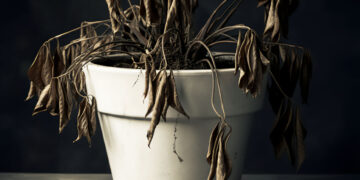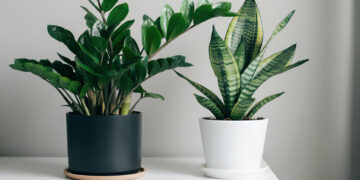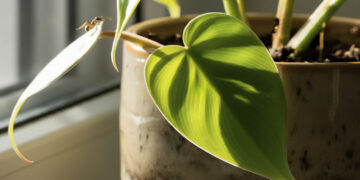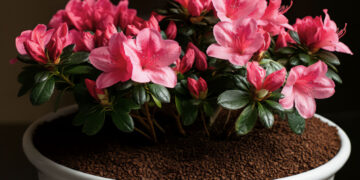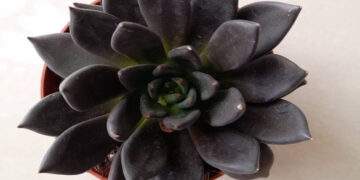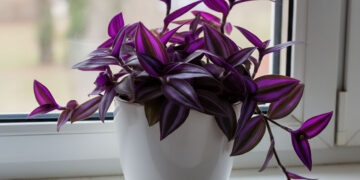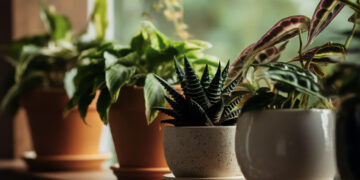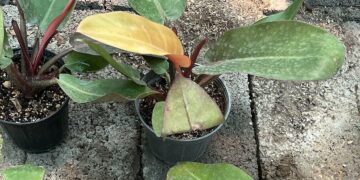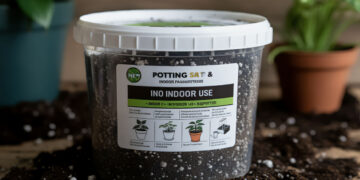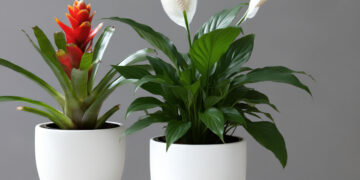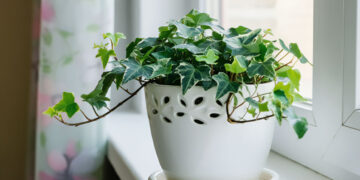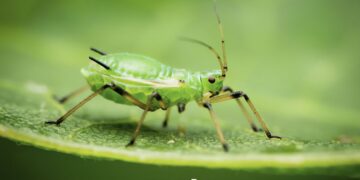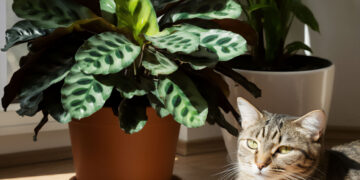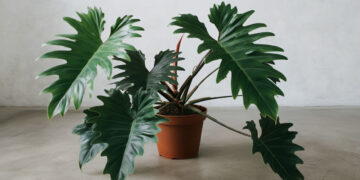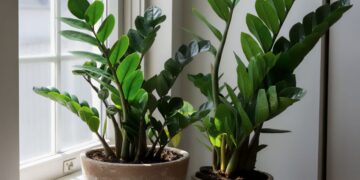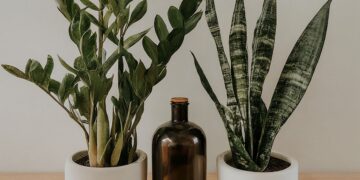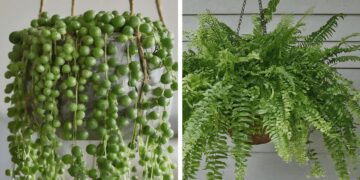Why should we use coffee grounds for houseplants? They are full of nutrients that help with the growth of green leaves, strong roots, and stems and also improve photosynthesis.
When used correctly, your houseplants will get a natural boost.
Coffee grounds can also help keep pests away. The gritty texture of the coffee grounds creates a barrier that slugs and soft-bodied insects don’t like. Plus, the caffeine in coffee grounds can repel ants.
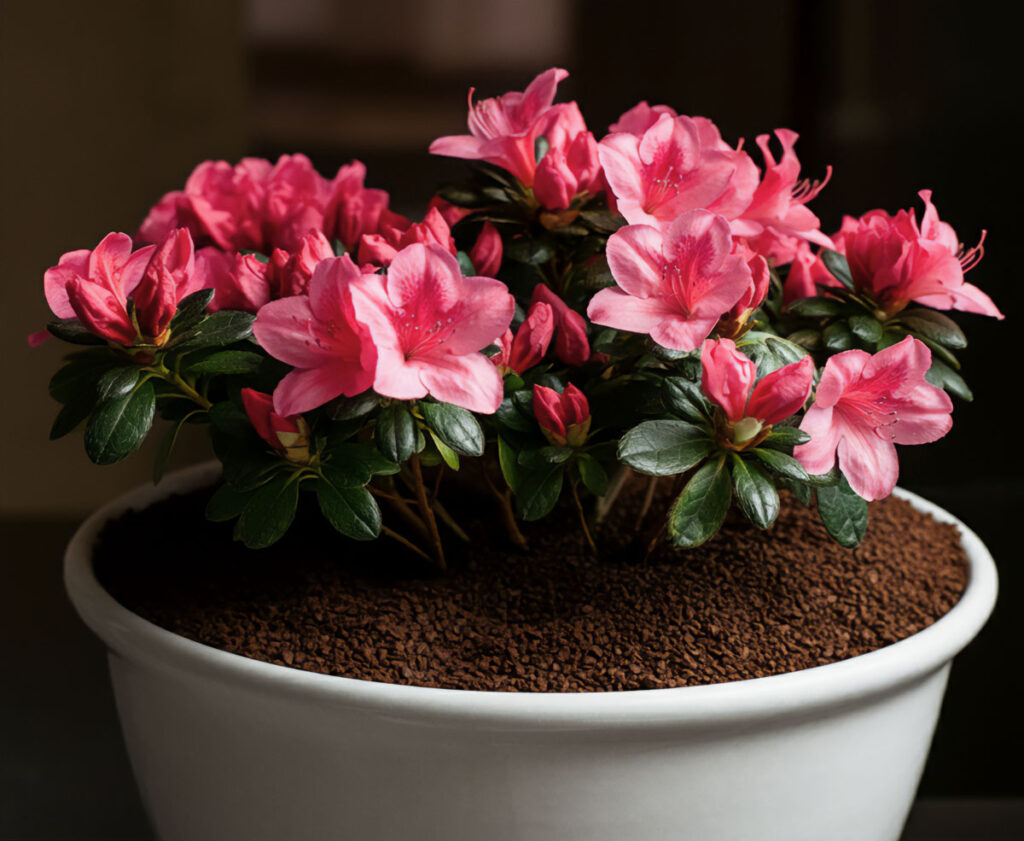
1. Find Houseplants That Love Coffee Grounds
Coffee grounds, especially after brewing, are a great choice for houseplants that enjoy slightly acidic soil. Houseplants like Azaleas, Christmas Cactus, African Violets, and Gardenias get along well with coffee grounds. Other indoor plants like Ferns, Camellias, and Bromeliads are also good options because they love slightly acidic soil.
houseplants like Aloe Vera, Echeveria, and ZZ plant that prefer neutral or alkaline soil, won’t like coffee grounds.
Tip: Houseplants that enjoy slightly acidic soil are usually medium to small in size, have thin roots, and typically have green, shiny leaves. They often grow compact and produce colorful flowers.
2. Collect and Prepare Coffee Grounds
Using coffee grounds isn’t just about throwing them into the pot! You need to prepare them properly to get the best effect. After brewing your coffee, keep the used coffee grounds. make sure they haven’t been mixed with sugar, cream, or anything else. You should dry the grounds because wet coffee grounds can grow mold.
Spread them out on a tray and let them air dry, or if you’re in a hurry, you can dry them in the oven for a few minutes. Once dry, store them in an airtight container to prevent clumping.
3. Add to Soil
There are different ways to use coffee grounds:
– The simplest way is to sprinkle a thin layer of coffee grounds on top of the soil and then lightly water it. Just be careful not to add too much. I always use this method because it’s less troublesome and has the lowest risk compared to the others.
– Another method is to mix the coffee grounds into the houseplant’s soil. This helps the nutrients reach the roots faster. After that, water your houseplant as usual.
– You can also mix coffee grounds with fruit peels, dry leaves, eggshells, and plant waste, let it decompose for a few months, and then either sprinkle it on the soil or mix it with the soil. This method is better for houseplants that don’t like very acidic soil.
– Finally, you can soak coffee grounds in water and use the liquid as a substitute for regular water when watering your houseplants.
Tip: No matter what method you use, try not to use it more than once a month.
4. Watch How Your Houseplants React
Some houseplants will become healthier and grow better with coffee grounds, while others might not like it. After applying coffee grounds, keep an eye on your indoor plants.
If the leaves become greener and the stems stronger, it means the coffee grounds are working well. But if the leaves turn yellow or the plant’s growth slows down, it could mean the soil has become too acidic. In this case, you should reduce or stop using coffee grounds.
5. Combine with Other Fertilizers
While coffee grounds have many benefits, they don’t provide all the nutrients your houseplant needs. To make sure your plant gets all the essential nutrients, combine coffee grounds with other fertilizers. For example, organic fertilizers like bone meal, fish emulsion, or seaweed extract can add more phosphorus and potassium to the soil. Slow-release houseplant fertilizers are also great for gradually feeding your houseplants over time (My favorite method).
I tried to explain everything very simply and practically, but if you’re unsure whether coffee grounds are suitable for a specific indoor plant you have, feel free to ask me in the comments.
sources:
https://clay.ces.ncsu.edu/some-advice-about-natural-additives-for-houseplants/
https://today.oregonstate.edu/used-appropriately-coffee-grounds-improve-soil-and-kill-slugs
